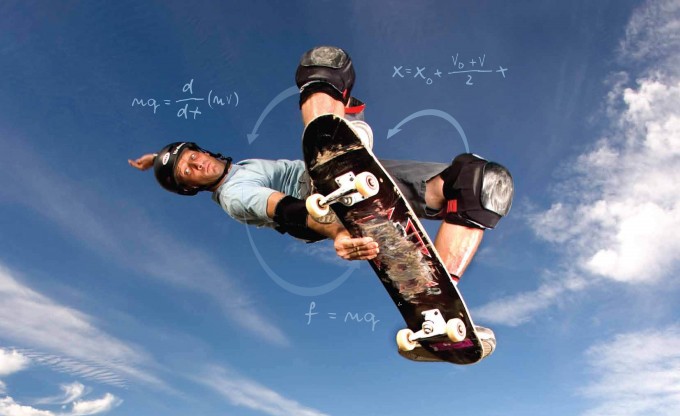
Physics may have made you yawn at school, but scientific principals are what make so many of the sports we love both possible and fun.
From the insanity of wind resistance in wingsuiting to even the most humbling laws of gravity and friction at work in parkour, the quirks of physics play their part in our own enjoyment and the entertainment of others.
With this in mind it might not surprise you to know that your local skatepark is basically a really exciting (and potentially painful) science lesson right on your doorstep.
Nowhere is this more apparent than in the humble quarter and half pipe. A mainstay of skate and bmx riding, these vital pieces of kit transfer scary drops into speed and lift for all of our favourite tricks, but how do they work?
Transfer
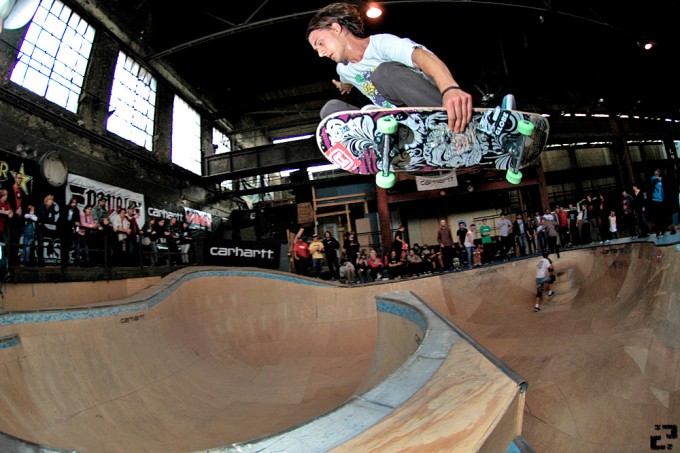
Quarter and half pipes are science incarnate as their shape allows riders to transfer in more ways than one, be that transferring from a pipe onto another obstacle or transferring energy between different forms.
Starting with stored chemical energy in the rider’s muscles (from whatever concoction of energy drinks and sugar they managed to cram down before hitting the park) the rider transforms this energy into kinetic energy by either climbing or skating up the face of the pipe.

From their position at the top of the pipe the rider has now stored this kinetic energy as gravitational potential energy. This energy depends on the subject’s mass and height from the ground, so if you’re a bigger skater or have decided to tackle a particularly big pipe then good news, all of that sweating and struggling to get up there is going to translate into a lot more speed!
Now it’s time to release all that energy, and this is where the genius of pipe design comes in. Because of it’s smooth and even curve, a pipe transfers potential energy efficiently into kinetic energy that you can control, allowing you to roll down that ramp and use all that new-found speed to smash your latest trick (or your face).
Dropping in
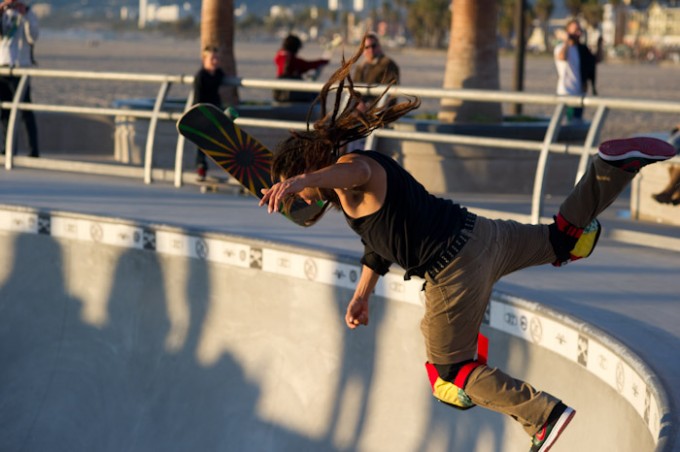
So far so good – make sure you have a big breakfast and find the biggest ramp you can, right? But what about that fear-inducing drop that marks the start of all good pipes? How do you conquer that?
Well we already know that gravity is at work trying to pull you straight down to a pretty painful crash at the bottom of the pipe but there are a couple of other forces at play here which are actually your friends.
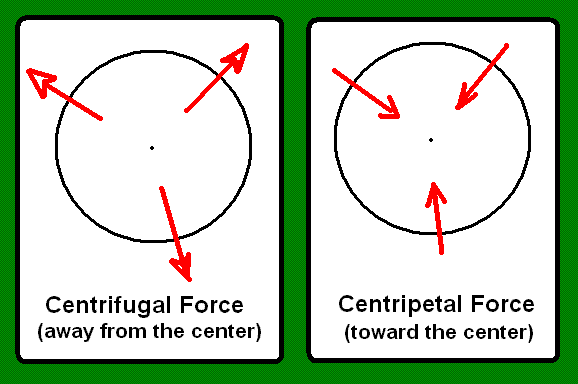
Centrifugal force is that feeling you get that makes it seem like you are being pushed into the ramp as you accelerate. It acts from the center of the pipe down, through you, into the ramp and would make you fall through the pipe if it wasn’t strong enough to take your weight.
In the opposite direction, pushing from the ramp below you towards the centre of the pipe is centripetal force which is what lets you keep travelling at speed around the curve.
To make these two often confused forces work for you it’s important to have them both acting evenly on your body. This means you want to be as close to vertical as you can be from the pipe beneath your feet at all times while you’re riding.
When you drop in, leaning forward to make sure you’re at right angles to the ramp is vital to make sure you rock the pipe rather than face planting.
If you let your board get ahead or behind your body those competing forces will squash you into the pipe and let you slide all the way down on your ass to a humbling stop at the bottom.
Equally it’s important not to attack it too hard by jumping into the drop. If your board’s not touching the ramp you’re pretty much falling, not skating.
This means that as you enter the pipe you’ve got nothing acting on you but gravity, which basically hates your face and wants you to travel in a straight line into the ramp rather than gliding smoothly along it.
This approach gives you precious little time to get the board in the right position to ride away smoothly so it’s best left at least until you’ve mastered a regular drop in.
Pumping
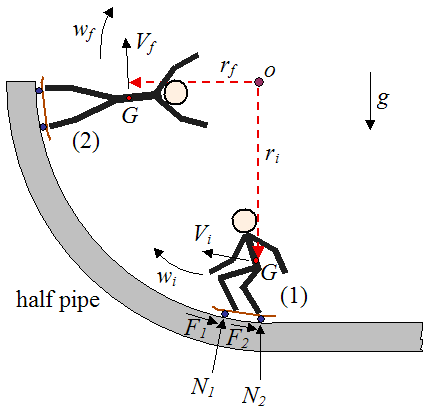
The law of conservation of energy states that energy can’t be added or subtracted in a system (in this case riding a halfpipe). So you can’t create new energy or destroy the energy you bring into riding the pipe, you can only transfer it between different states.
According to science this means that if you were just going to drop in from one side of the pipe and ride it for a while, you’d eventually come to a halt. The gravitational potential energy you had on one side would slowly run out as it turned into heat energy under the friction of your board and your wheels running on the ramp. And at no point should you be able to actually get air like this.
A rider’s ability to not only speed up while they’re in the pipe, but also to get air which is greater than their potential energy should allow seems kind of confusing at first. It’s not just down to super slick bearings in the wheels (though these help). It’s down to pumping.
Pumping pushes the board away from the rider, introducing energy (from that tasty breakfast we mentioned earlier) to accelerate the speed of the board.
As the smart guys at Real World Physics Problems explain it, pumping works in pretty much the same way that using your legs on a swing does, adding energy to the system and giving you more height for that all important air.
Loop the loop
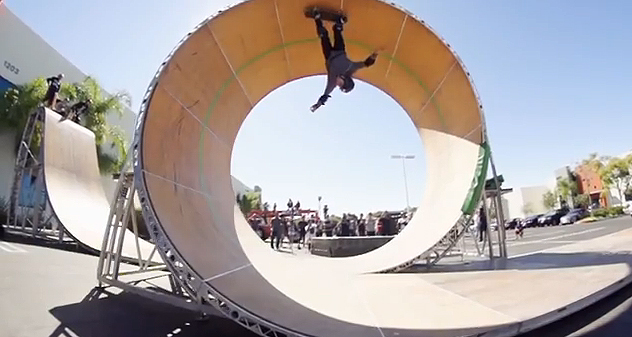
Finally the daddy of all features, the full pipe or loop the loop. If your park is lucky enough to have one of these you are in for a white-knuckle ride that simply comes down to some good old-fashioned physics (and a truck load of courage).
The same forces from a half pipe are present here again, with centripetal and centrifugal force battling it out against your body, but this time in 360 degrees of stomach-churning awesomeness. So, taking the lessons from before about evenly distributing your weight, the key thing to bring to the full pipe is speed.
If you’re even a tenth of a mile an hour out you’re going to lose contact with the ramp, and that’s likely to suck…
At the top of the loop the loop you’re going to have both the centrifugal force of the ramp pushing back against you and gravity doing it’s best to make you fall too. So your only hope is to create enough centripetal acceleration (the force pushing you into the ramp) to beat both those other forces trying to ruin your day.
For a three meter loop you need around 8.6 mph of speed which is definitely doable with a bit of a run up or a tow in from a friendly bmxer, but remember that if you’re even a tenth of a mile an hour out you’re going to lose contact with the ramp, and that’s likely to suck.
Your safest bet is to have a properly sized run in ramp that will give you dependable acceleration into the loop, and thankfully the geniuses at MIT have this all worked out for us.
As the rather humourless video above demonstrates, the exact height you’re looking for is 2.7R, that’s 2.7 x the measurement from the center of the pipe to the edge (the radius), roughly half as tall again as the pipe itself.
So, if your full pipe has a radius of two meters you’ll need a ramp that’s around 5.4 meters tall. This should give you enough boost to scientifically make it (if you’re a tiny metal ball in a science lab that is). Still there’s no harm in adding an extra foot or two to make sure!
And there you have it, useful science for your skate park adventures. So next time you’re stood at the top of a monster pipe looking down at the drop – try using your head to stop yourself landing on it.
You may also like:
This Game-Changing Crystal Could Let You Breathe Underwater… For Real